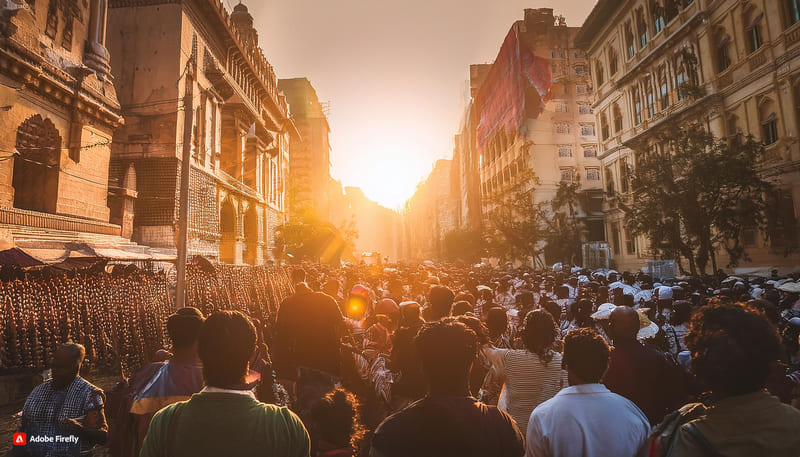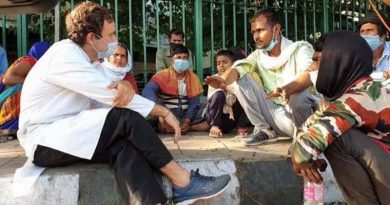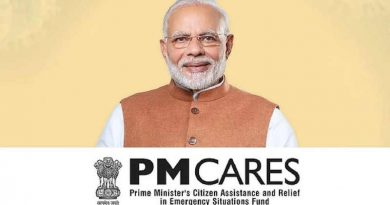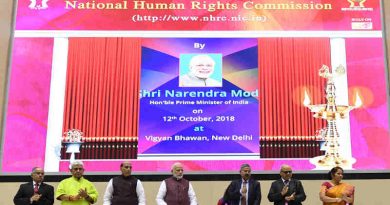Violence in Bangladesh Confirms Peaceful Public Protests Fail in Authoritarian Regimes

Violence in Bangladesh Confirms Peaceful Public Protests Fail in Authoritarian Regimes
Now it is evident that the Bangladeshi and Sri Lankan models of public protests can succeed in many autocratic nations where the dictators are hell-bent to destroy the democratic structures.
By Rakesh Raman
After months of violence and civil unrest in Bangladesh, prime minister (PM) Sheikh Hasina resigned and fled the country on August 5 fearing attack on her by the protesters.
Reports suggest that hundreds of people have died in the clashes with security forces while the protesters – who demanded Hasina’s resignation – broke into her residence and vandalized the property after her departure.
People have complained that Hasina had extended her rule in Bangladesh with a rigged 2024 election in which almost the entire opposition did not participate. Now, after her departure, peace is gradually returning to the South Asian nation.
The violence in Bangladesh was a virtual action replay of a similar unrest of 2022 in Sri Lanka where belligerent protesters forced Rajapaksa brothers, then President Gotabaya Rajapaksa and Prime Minister Mahinda Rajapaksa, to leave the island nation. Earlier, Afghanistan President Ashraf Ghani faced public anger and fled to save his life as the Taliban took over.
The events in Afghanistan, Bangladesh, and Sri Lanka confirm that in authoritarian nations – where justice systems have collapsed and the crooked politicians win elections fraudulently – violent protests can restore democratic systems.
It is not only Bangladesh, but election frauds are reported in many other autocracies as well. For example, repeated complaints of electronic voting machine (EVM) manipulation to win elections are being filed in India where Narendra Modi has managed to become the PM for the third consecutive term.
Recently, large-scale protests took place in Venezuela where the incumbent Nicolás Maduro was deceptively declared the winner by the government-controlled National Electoral Council in the 2024 presidential election.
In a statement issued on August 1, 2024, the U.S. Secretary of State, Antony J. Blinken said that the results by the Maduro-controlled National Electoral Council were deeply flawed, yielding an announced outcome that does not represent the will of the Venezuelan people. In other words, the U.S. refused to accept Maduro’s victory.
PEACEFUL OR VIOLENT PROTESTS
It is often said that the protesters who are deprived of their fundamental rights in different countries should hold peaceful protests to highlight their grievances.
However, in almost all the countries peaceful protests by citizens have failed and rather the protesters are brutally attacked by the police and security forces which act like cruel mercenaries deployed by the tyrannical rulers to crush the peaceful protests.
Examples of such countries where peaceful protests have failed include Russia, Belarus, China, Hong Kong, India, Israel, Myanmar, Brazil, Thailand, Venezuela, and a number of other places. The peaceful protesters in these authoritarian countries are facing police brutality, arbitrary arrests, torture in custody, unlawful prosecutions, and even death penalties.
As authoritarianism is spreading across the world like a dreadful pandemic disease, police and security personnel behave as gangs of criminals hired by the rulers and court judges work as slaves to those tyrants.
Global leaders in the U.S. and Europe as well as the good-for-nothing UN bureaucrats such as the UN Secretary-General António Guterres and the UN High Commissioner for Human Rights Volker Türk keep making casual, meaningless, and perfunctory statements to condemn the authoritarian regimes. But they do not take any steps to protect people and their rights.
Unfortunately, there is no justice or relief for the persecuted communities who protest peacefully. There is, however, a ray of hope visible in countries like Bangladesh and Sri Lanka where protestors sacrificed their lives to liberate their countries from dictators.
Hundreds of thousands of oppressed citizens in Bangladesh and Sri Lanka participated in aggressive and violent street protests that have brought an interim justice to them. The protesting citizens in these countries have overthrown the tyrants who are on the run.
It is being observed that when the protesters raise their voice peacefully, they are beaten by the regime-backed security personnel. But when the protests turn violent, the protestors are allowed to freely move forward to dethrone the corrupt rulers.
Now it is evident that the Bangladeshi and Sri Lankan models of public protests can succeed in many autocratic nations where the dictators are hell-bent to destroy the democratic structures.
SIGNS OF FRENCH REVOLUTION
The violent protests in Bangladesh, Sri Lanka, and other autocratic countries have the shades of the French Revolution (1789 – 1799) which led to the Storming of the Bastille and beheading of King Louis XVI who was executed by guillotine to end his monarchy in 1793.
The Storming of the Bastille in Paris, France, on 14 July 1789 happened when revolutionaries stormed and seized control of the medieval armory, fortress, and political prison known as the Bastille.
Since the Bastille represented royal authority for the rulers in Paris, the revolutionaries denounced it as a symbol of the monarchy’s abuse of power. Therefore, its fall was the flashpoint of the French Revolution.
The common people of France had started the French Revolution to achieve radical political and societal change and to establish the fundamental principles of liberal democracy.
Since the regime at that time was not able to tackle social and economic chaos in France, a decade of violent protests by commoners achieved peace and prosperity in the country which is now among the leading and most developed European nations.
Before the French Revolution, the society was divided into three classes: clergy; nobility, and the commons. Despite representing more than 95% of the population, the commons (ordinary citizens) did not enjoy full rights and were persecuted by the clergy and the nobility while both these affluent classes were largely exempt from tax and enjoyed state privileges.
The French Revolution, in fact, was a class conflict between the poor working class known as the proletariat and the rich rulers known as the bourgeois. In order to crush the voices of the poor revolutionaries, the French monarchy raised a force of “counter-revolutionaries” who were blind followers of the ruling class.
While the French Revolution helped France emerge as a powerful nation in the world, it is now inspiring the commoners in the underdeveloped economies such as Bangladesh, Sri Lanka, India, and Pakistan to follow the same path to achieve democracy and economic stability.
The people in these poor countries are finally trying to emulate the French Revolution model to dethrone the modern-day monarchs. Afghanistan, Bangladesh, Sri Lanka, and Venezuela have already applied the French Revolution model.
RESISTANCE MOVEMENT
Now, a similar resistance movement is expected in India and Pakistan, where the corrupt and cruel rulers have failed to maintain peace and economic stability while the citizens are struggling to survive.
After a series of public protests led by opposition parties against Imran Khan’s failure to revive the economy in Pakistan, he was removed from the PM position in April 2022 and later jailed. As the socio-economic situation has still not improved in Pakistan, the people of Pakistan are expected to get inspired by Bangladesh to revive their street struggle.
While the political situation is worse in India under the government of PM Modi, there is no demand for his resignation because the opposition parties are extinct and the opposition leaders exist as zombies.
Most lazy opposition leaders keep sitting shamelessly on Twitter to curse Modi and his policies, but they never lead crowds on the streets to get Modi removed.
The people in India are also so timid that they never hold sustained demonstrations against the Modi regime and prefer to die silently under extreme corruption, human rights abuses, inflation, poverty, deadly diseases, religious hatred, and unemployment.
In collusion with his ministers who behave like his slaves, corrupt bureaucrats, criminal police personnel, and complicit courts, Modi has already reduced India to the level of a lawless state and now he is hell-bent to ruin India to an extent that the country of 1.4 billion people will disappear from the world map.
So, the ordinary people of India – the hoi polloi – must form groups and protest against Modi and his party asking them to resign. Then a council of domain experts – who do not belong to any political party – must be constituted to run the government in India.
By Rakesh Raman, who is a national award-winning journalist and social activist. He is the founder of the humanitarian organization RMN Foundation which is working in diverse areas to help the disadvantaged and distressed people in the society.


![Representational Image of a Protest Created with Adobe Firefly Generative AI. By RMN News Service [ Japanese Organization Nihon Hidankyo Wins Nobel Peace Prize for 2024 ]](https://www.ramanmedianetwork.com/wp-content/uploads/2024/08/protestff-800x445.jpg)



